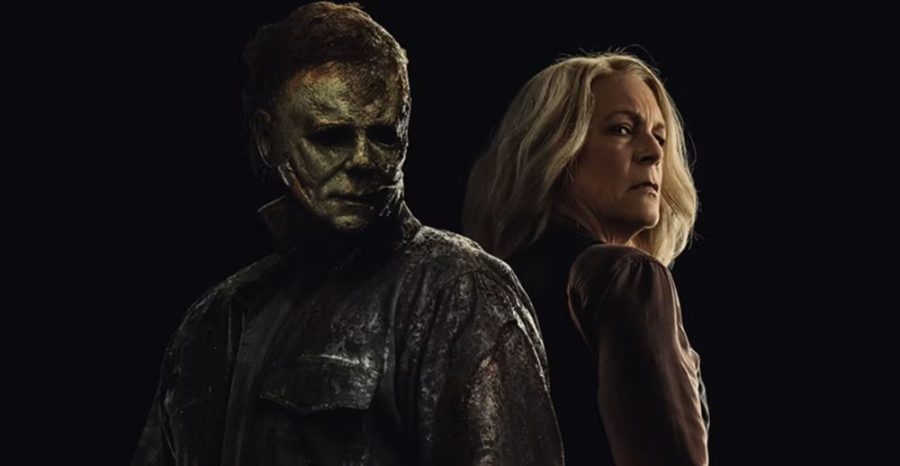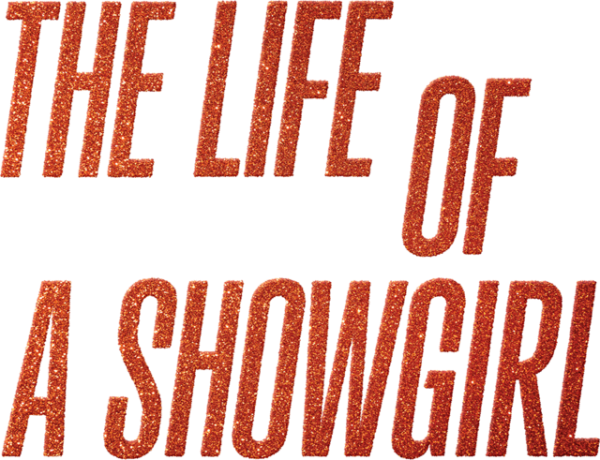Halloween Ends – A History: 13 Movies, 44 Years
‘Halloween Ends’ brings the Jamie Lee Curtis franchise to a close, but fans wonder if this is really the end.
John Carpenter’s Halloween – the soundtrack, that is – is some of the most chilling movie music there is, and anyone who knows what it represents is immediately reminded of the annual rituals of October 31st. Those simple notes – the theme of the movie of the same name – represent an enormous franchise of some of the most well-known slasher films of all time. Sit back, relax, and take a dive into the history of Halloween.
The Beginning
Released in 1978, Halloween tells the story of Michael Myers, where the film begins with a six-year-old Myers stabbing his older sister to death. Fast forward fifteen years, and Myers has found himself in a sanitarium ever since the initial incident. In transport to a hearing alongside his psychiatrist, Dr. Samuel Loomis, Myers escapes and travels to the fictional town of Haddonfield, Illinois.
In Haddonfield, Myers stalks high school student Laurie Strode (played by Jamie Lee Curtis) and enacts a night of terror, murdering various Haddonfield residents. A final fight between Strode and Myers eventually ensues, with Strode surviving as Myers is knocked off a balcony by six gunshots from the aforementioned Dr. Loomis. When Loomis looks over the balcony, however, Myers is gone – and the film ends with the notion that he could be anywhere.
A Complicated Franchise
Halloween (1978) is just one entry in a thirteen-movie franchise. Unlike other famous series like Harry Potter and Back to the Future, though, it’s not a simple matter of watching the films from beginning to end. Halloween has no less than five different timelines, some branching off from each other and others being completely disconnected.
The first sequel to Halloween (1978) was Halloween II (1981). From that sequel came two separate timelines of follow-ups, a trilogy and a duology. Halloween III: Season of the Witch (1982) was a movie separate from every other film, and the only movie in the franchise to not feature Michael Myers. It is typically stated that the franchise was originally intended to be an anthology telling different stories all revolving around the holiday of Halloween itself, but because Myers Myers returned in the first sequel, the entire franchise became associated with the character, hence Myers being brought back for the fourth movie and all ensuing sequels.
Halloween (2007) is a remake of the original 1978 film, and has its own sequel.
Feeling lost yet? We can’t blame you if you do. After all, every single movie title in the series begins with the same word, and three of them have the exact same one-word title. If you’ve managed to keep count so far, we’ve mentioned ten movies of this famous but hard-to-follow franchise – and that leaves three.
The New Timeline

Halloween (2018) is a direct sequel to the original 1978 film, disregarding all of the movies and timelines between them. Michael Myers is established to have remained in a sanatorium for 40 years after the night of the original movie, but escapes during a prison transfer on the night before Halloween and returns to Haddonfield, enacting another night of terror on the 31st. Laurie Strode (still played by Jamie Lee Curtis) lives in relative paranoia in a heavily protected house. The movie culminates with another fight between Strode and Myers at the house, with Myers being trapped in the basement as Strode and her family set the house ablaze.
Halloween Kills (2021) immediately follows the previous movie. We see an injured Strode being driven towards medical care while firetrucks move in the opposite direction; a distressed and disoriented Strode screams, “LET HIM BURN!” (obviously to no avail). Firefighters inadvertently free Myers, and the night of terror continues, culminating in a mob attempting – and failing – to kill him. The movie closes at the Myers’ childhood home, where Strode’s daughter, Karen Nelson, is stabbed just where Myers’ sister had been stabbed at the very beginning of the 1978 movie that started it all.
Halloween Ends
Released on October 14, 2022, the thirteenth movie in the franchise is claimed to be the final, and is the fourth movie in its timeline. Halloween Ends again follows Laurie Strode (again played by Jamie Lee Curtis), who is stated to undergo a final showdown with Michael Myers. In an interview with Stage Right Secrets, Curtis noted, “This movie takes place four years later…Strode has been given [therapy, counseling] and clearly, there is a moment where when people have suffered such horrific losses, there’s really a choice of ‘do I live or do I die?’…at the beginning of the movie we’re meeting Laurie Strode four years after her daughter has been killed, very quietly trying to have a personal life. She lives with her granddaughter. Then, we take her up that ‘hope hill’ for just the beginning of the movie; and then, of course, Myers comes back, and all of that hope gets dashed.”
Expectations for Halloween Ends were generally high, but some questioned whether the film could succeed in its aim to enact a thrilling and well-executed conclusion. In terms of its immediate predecessors, Halloween (2018) received generally positive reviews, while reception of Halloween Kills (2021) was more mixed. All three of these movies are directed by David Gordon Green.
One question remained, however: Will this be the movie that finally puts the franchise to rest, or will its ‘end’ designation disappear from below the balcony as another Halloween returns to thrill audiences in the future?
Halloween Ends: A Review
Warning: The rest of this article contains spoilers.
From the expectations that had been set for it, did Halloween Ends deliver as an end-all, be-all finale? Answer: Debatable.
The latest installation in the franchise centers around a new character, Corey Cunningham, a 21-year-old who accidentally causes the death of the child he is babysitting. He is officially cleared of any wrongdoing, but many in the town blame him for the incident. He begins dating Allyson Nelson, granddaughter of Laurie Strode and daughter to Karen Nelson, with Strode initially encouraging the relationship. At the same time, Strode is working on a memoir of her encounters with Michael Myers, who has disappeared after the events of the previous two films in the series.
After a conflict at a restaurant with Nelson’s previous romance, a police officer named Doug Mulaney, Cunningham lures Mulaney into the town’s sewer system where a lurking Myers stabs Mulaney to death, inexplicably letting Cunningham go. As Cunningham’s behavior becomes more erratic, Strode becomes increasingly suspicious and begins to try to force an end to his relationship with Nelson. Nelson believes that Strode is being overprotective, and Cunningham suggests that the best option is for the two to leave Haddonfield, to which Nelson agrees. Both Nelson and Cunningham, along with some other citizens of the town, blame Strode for inciting Myers’s past actions.
On Halloween night, Cunningham, in collaboration with Myers, begins a spree of violence against those who had wronged him in various ways, killing his mother and others. Strode is now fully aware of Cunningham’s newfound evil, and lures him to her house, where she shoots him. He does not immediately die, and stabs himself in order to frame Strode for his death, which Nelson initially believes upon walking into the house and witnessing the scene before her. However, Myers arrives, finishing off Cunningham, and in an intense fight with Strode, she ultimately prevails, pinning Myers to a table with multiple knives and other devices. The body of Myers is driven through town to a car salvage yard, where it is publicly destroyed by an industrial shredder.
The movie concludes with Strode completing her memoir, and reconnecting with Deputy Hawkins, a character from previous entries in the franchise.
First off, the elephant in the plot summary: Noticeably lacking from most of the story is Michael Myers, the character around which the franchise is based. Instead, the focus is on Corey Cunningham, a brand new character who is ‘assimilated by the forces of evil’ and eventually becomes Myers-like himself. Alongside this comes a romance story between Cunningham and Allyson Nelson, the granddaughter of Laurie Strode.
Halloween Ends can be broken down into two parts: The first three-fourths or so of its one hour, 51 minute runtime, which center on the aforementioned elements, and the end of the movie, which actually feels like a Halloween film. Instead of picking up where the last entry into the series left off, we are a couple of years into the future. Strode is writing a memoir and trying to make the best of life – all is well and good there. But at the same time, we get a convoluted and excessively metaphorical story about the power of evil, involving romance and featuring a character exclusive to only this film.
Viewers must try to follow along as they are taken on this strange, unexpected journey, where they’ll likely be surprised to find that Michael Myers is no longer an immortal-like, menacing killer, but a mere murderous antagonist that teams up with a random 21-year-old because he ‘sees evil within him’. Myers inexplicably acts as a mentor to Corey Cunningham, even showing him specific methods of killing his victims.
Then, there is the more sensical – and more fulfilling – end of the movie. Myers comes to the Strode house and is the one who deals the final blow that ends Cunningham’s life (as if he finally remembers how he usually acted in the last dozen or so movies). The fight between Strode and Myers is easily the most thrilling part of the film, and delivers on the final showdown between the two that was promised.
The decision to entirely destroy the body of Myers suggests that this is most certainly the end – at least, in this timeline. Thus, we reach the ending that was hoped for – but only after about ninety minutes of emotion ranging from confusion to disappointment.
Halloween Ends gets the ending right, but the buildup wrong. Michael Myers perishes for good, but without the movie-long spree of terror that most long-time fans of the franchise would have hoped for. The conclusion is satisfying, but the way that it was reached is not.
In terms of reception, Halloween Ends has similar mixed ratings as its immediate predecessor, Halloween Kills, that are not altogether terrible – but Ends’ 41% rating on Rotten Tomatoes is certainly a fall from the 96% received by the 1978 classic.
The fact that Halloween Ends received mixed reviews – as opposed to downright bad reviews – lies partially in the acting. Jamie Lee Curtis’ performance as Laurie Strode is exceptional, just as it has been in previous films. The other actors all gave solid performances as well, and they seemed to successfully match the feeling that the film was going for.
One cannot be too critical of the thirteenth movie in a series by itself – at that point, disappointment can come from the fact that a franchise has gone on, and on, and on, just as much as it can be derived from a movie itself. Had we not had twelve other movies to consider, Halloween Ends likely would have been less disappointing without the very specific expectations that prior knowledge had set.
As a whole, the film does indeed deliver on its promise to wrap up this timeline of Michael Myers; at the same time, the movie itself fails to deliver to audiences the same level of enjoyability, thrill, and terror as other entries into the franchise.

Stephan Schwab is a senior at LRHS and this is his third year writing for The Lancer Ledger. He is the Editor-in-Chief of The Ledger and President of the...








Christina Schwab • Nov 14, 2022 at 1:52 pm
Great article, Stephan!